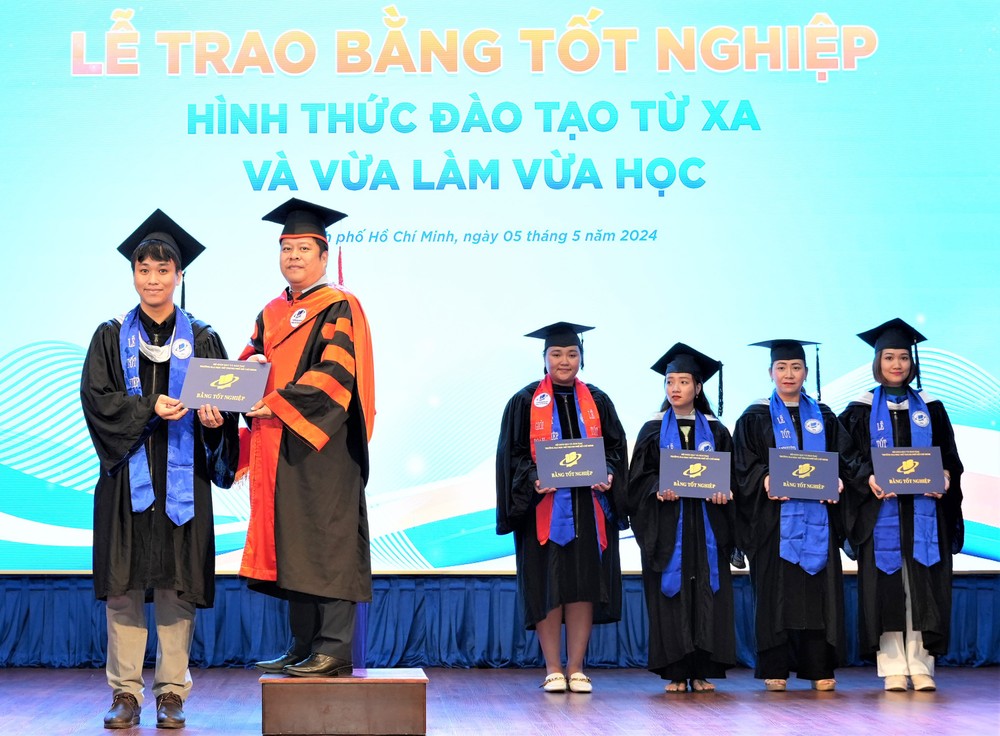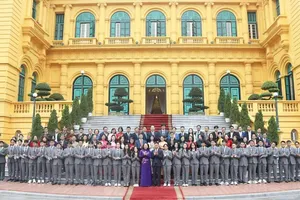
Currently, many schools are promoting distance education, which utilizes technology to deliver instruction, as a means to attract more students. To maintain quality standards, the Ministry of Education and Training will begin enforcing stricter regulations on distance education programs from 2024 onwards.
The Ministry of Education and Training issued Circular No. 28 on distance education at universities to replace Circular No. 10 issued on April 28, 2017. The new Circular has many new points to tighten the quality of this training system.
Circular 28 explicitly defines distance education as a mode of instruction where 50 percent or more of the overall training program is conducted through one or a combination of distance education methods, including computer networks, telecommunications, correspondence, radio, and television.
Furthermore, distance learning programs are permitted solely for disciplines that have had a minimum of three consecutive courses offered in a traditional format. It is important to note that distance learning is not applicable to health sector majors that require practice certificates, nor to teacher training programs.
Circular 28 not only addresses the prerequisites for establishing majors and infrastructure but also enhances the criteria for teaching personnel. Consequently, the teaching staff, learning support personnel, and administrative staff are required to fulfill specific standards regarding quantity, quality, qualifications, and organizational structure. Additionally, they must possess training in skills, pedagogical techniques, and the management of distance learning.
Furthermore, the implementation of distance learning programs allows for a maximum of 30 percent to be conducted by guest lecturers, which can be increased to a maximum of 50 percent if the guest lecturer is a permanent faculty member of the coordinating institution, in accordance with present regulations.
A representative of Tra Vinh University said that the school has been offering a distance learning program since 2017, in accordance with Circular 10. To date, the institution has established distance learning centers at ten affiliated units and has enrolled students in seven academic disciplines, which include Law, Accounting, Business Administration, Banking and Finance, Information Technology, English Language, and Political Science, with a total enrollment exceeding 9,000 students.
The university has more than 1,000 students participating in this program. A representative from the university stated that the necessary conditions for conducting distance learning, such as qualified teaching staff, technical infrastructure, textbooks, and electronic libraries have been standardized.
However, with the newly-issued Circular 28, the school will raise the standards for the teaching staff. In the coming time, the school also aims to assess the quality of distance learning programs.
Both Hanoi Open University and Ho Chi Minh City Open University, leading institutions in distance education, believe that online training and distance learning are increasingly merging. According to the two schools, while both online training and distance learning aim to leverage technology to enhance teaching and learning, it is essential to make a clear distinction between these two types of training.
At present, online training offered by many schools contributes only 30 percent of the total credits required for a regular university degree. In contrast, distance learning is an officially recognized training system with well-defined regulations and the authority to award degrees to learners who complete the program. To ensure the quality of distance learning programs, it is essential to implement regular evaluations and move towards accreditation, aligning them with the standards of traditional programs.
Head Nguyen Trung Nhan of the Industrial University of Ho Chi Minh City’s Training Department at stated that the existing Law on Higher Education does not differentiate among various training modalities.
As a result, training programs, whether they are regular, part-time, or conducted through distance learning, are treated equivalently. Nonetheless, it is important to note that the current quality assessment of training primarily emphasizes regular training programs.
























